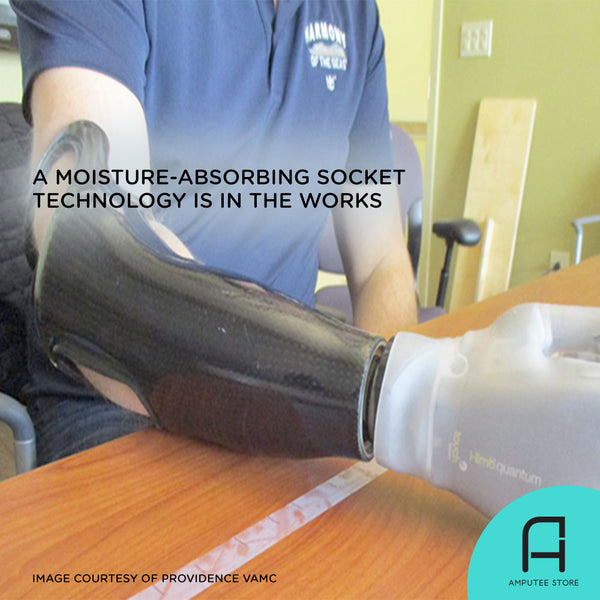A Moisture-Absorbing Socket Technology Is in the Works
Excessive sweating is an issue for numerous prosthetic users. It affects the prosthetic socket fit and contributes to tissue softening from constant exposure to water. It can sometimes even lead to infection, poor hygiene, and discomfort.

Experts at the Advanced Platform Technology (APT) Center at the Louis Stokes Cleveland VA Medical Center are working together with their colleagues at the University of Chicago and Case Western Reserve University to develop a new socket material that can better absorb and channel the sweat that tends to build up inside your prosthesis. Should this development become available to everyone, it would significantly improve daily life for many prosthesis users.
The team aims to develop a three-layer liner system made of advanced hydrated materials that allow moisture to pass through. The team hopes that the system will eventually replace the traditional water-impermeable silicone liners, which creates a problem by trapping moisture against the prosthetic user’s skin.
How the new material works
To address this problem, the team aims to develop a system that can absorb and manage sweat faster than normal sweat production without leaking or the material changing in size and stiffness.
The system will also be designed to withstand heavy use, particularly by lower-limb amputees, while maintaining a tight seal along the skin to achieve a good fit.
According to Paul Marasco, Ph.D., a neuroscientist and principal investigator at the APT Center, the hydrated material system is a modified version of silicone-made suction socket liners. He explained that silicone liners are created by a connection of long chains of molecules. The team only needed to change how the molecules connect to make way for tiny channels where sweat can pass through.
The sweat will then be captured in aerogel layer—another advanced material that works like a sponge. But the difference is this layer of aerogel holds sweat without expanding. Best of all, the water doesn’t get pushed out when the prosthetic user puts weight on the liner.
From development to commercialization
The process of developing and testing the advanced socket liner material is multi-faceted. So far, the team has been able to check different designs of the inner wicking or the absorbing and draining layer as well as the middle absorption layer. The latter is responsible for how fast the sweat can be wicked and stored. It also determines the stiffness of the layers.
They have already tested how fast a two-layer system—comprised of the inner wicking and middle absorption layers—wicks away and stores water. The test also determined how water can be removed from the two-layer system.
Another phase of the testing process has seen researchers measure size changes when the two-layer system goes from dry to wet and back to dry.
The testing doesn’t stop with ensuring that the material works as designed. In a different phase of the project, the team aims to examine the bacterial content of daily-use socket liners to determine the bacterial load that is safe on the skin. Thirty-three veterans were tapped to participate in the study.
Finally, the three-layer system will be tested at the end phase of the study. This will involve testing the materials’ sweat-wicking and absorption capabilities and determining the normal range of bacterial load.
After the development phase, the goal is to produce a full-sized prosthetic socket liner for amputee volunteers to test. The research team hopes that this system will be commercially available in two to five years.
What do you think of this new development? Based on your current use case, would you say that a moisture-absorbing socket liner can make a difference?









































































